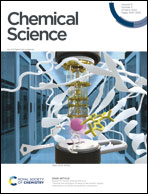Chirality at nanoscale for bioscience
Abstract
In the rapidly expanding fields of nanoscience and nanotechnology, there is considerable interest in chiral nanomaterials, which are endowed with unusually strong circular dichroism. In this review, we summarize the principles of organization underlying chiral nanomaterials and generalize the recent advances in the main strategies used to fabricate these nanoparticles for bioscience applications. The creation of chirality from nanoscale building blocks has been investigated both experimentally and theoretically, and the tunability of chirality using external fields, such as light and magnetic fields, has allowed the optical activity of these materials to be controlled and their properties understood. Therefore, the specific recognition and potential applications of chiral materials in bioscience are discussed. The effects of the chirality of nanostructures on biological systems have been exploited to sense and cut molecules, for therapeutic applications, and so on. In the final part of this review, we examine the future perspectives for chiral nanomaterials in bioscience and the challenges posed by them.

- This article is part of the themed collection: 2022 Chemical Science Perspective & Review Collection


 Please wait while we load your content...
Please wait while we load your content...